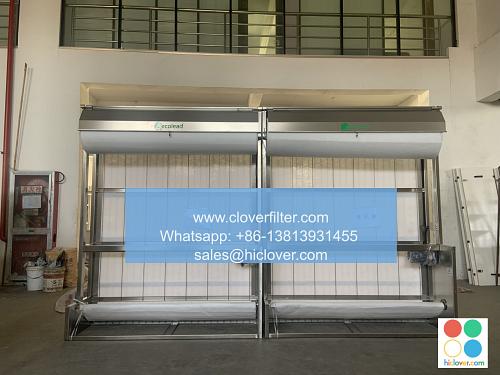Air Filter Maintenance: What You Need to Know About Fiberglass

Proper air filter maintenance is crucial for maintaining good indoor air quality, improving heating and cooling system efficiency, and reducing energy costs. Among various types of air filters, fiberglass air filters are one of the most commonly used due to their affordability and effectiveness. In this article, we will delve into the world of fiberglass air filters, discussing their benefits, filtration efficiency, and application areas, as well as providing tips on how to maintain them.
##
What are Fiberglass Air Filters?
Fiberglass air filters are made from fiberglass media that is designed to capture airborne particles such as dust, pollen, and other contaminants. They are typically used in residential and commercial HVAC systems to improve indoor air quality and protect the system from damage. Fiberglass air filters are known for their cost-effectiveness and
##
Benefits of Fiberglass Air Filters
The benefits of using fiberglass air filters are numerous. Some of the most significant advantages include:
* Improved indoor air quality: Fiberglass air filters can capture up to 80% of airborne particles, improving the overall air quality in a building.
* Increased system efficiency: By keeping the HVAC system clean, fiberglass air filters can help improve its efficiency, reducing energy costs and prolonging its lifespan.
* Cost-effective: Fiberglass air filters are generally less expensive than other types of air filters, making them a budget-friendly option.
* Easy to install and maintain: Fiberglass air filters are simple to install and maintain, making them a great choice for homeowners and business owners who want a hassle-free solution.
##
Application Areas
Fiberglass air filters have a wide range of applications, including:
* Residential HVAC systems: Fiberglass air filters are commonly used in residential HVAC systems to improve indoor air quality and reduce energy costs.
* Commercial HVAC systems: Fiberglass air filters are also used in commercial HVAC systems to maintain good indoor air quality and improve system efficiency.
* Industrial applications: Fiberglass air filters can be used in industrial settings to capture airborne particles and contaminants, improving the overall air quality and protecting equipment.
* Air purification systems: Fiberglass air filters can be used in air purification systems to capture airborne particles and improve indoor air quality.
##
Maintenance and Replacement
To ensure that your fiberglass air filter continues to function effectively, it’s essential to maintain and replace it regularly. Here are some tips:
* Check the filter regularly: Check the filter every 1-3 months to see if it needs to be replaced.
* Replace the filter as needed: Replace the filter every 1-3 months or as needed, depending on usage and indoor air quality.
* Clean the filter: Some fiberglass air filters can be cleaned and reused, while others need to be replaced. Check the manufacturer’s instructions to see if your filter can be cleaned.
* Upgrade to a high-efficiency filter: If you want to improve the indoor air quality in your home or business, consider upgrading to a high-efficiency filter, such as a HEPA filter or a pleated filter.
In conclusion, fiberglass air filters are a cost-effective and efficient way to improve indoor air quality and reduce energy costs. By understanding the benefits, application areas, and maintenance requirements of fiberglass air filters, you can make informed decisions about your air filter needs and ensure that your indoor air quality remains good. Remember to always check the filtration efficiency and application areas of your air filter to ensure that it meets your specific needs. You’ve provided a prompt, but it doesn’t contain any specific question or topic for me to address. Could you please provide more details or clarify what you’re looking for? I’m here to help with any questions or topics you’d like to discuss. What’s on your mind?

